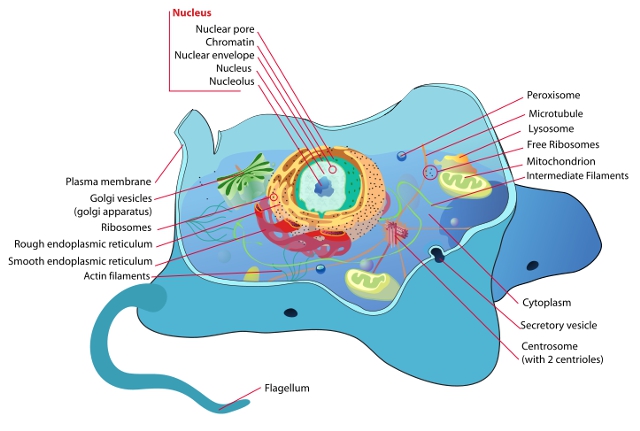We’ve talked before in the Truth and Evidences series about how anything at all could have come into existence. Today, in particular, we’re going to be looking at the first life.

My dad still has my fourth grade science book. It is a clear example of how scientists try to break the rules of science to try to explain their views. On one page it talks about how “spontaneous generation” has been disproven – how people used to think that mice actually came from dirty clothes, or that flies came from dead meat. And the book explained how through the experiments of Louis Pastuer, that spontaneous generation (life coming from non-life) was disproven. Life, it said, could not come from non-life; life can only come from life. That was the end of the chapter. Turn the page, and a new chapter began: ‘Where did the first life come from?’ the new chapter asked. And it’s answer? Scientists are unsure, but many suggest that the first life did in fact come from non-life.
That is what my fourth grade science book taught my class about science. It showed the observable scientific evidence (that life can only come from life), and then it tossed it out the window in the conclusions.
Often people just lean on evolution to somehow bridge this gap. But Darwin’s theory of evolution attempts to explain how we could have such a variety of life from a common ancestor, but offers no good explanation on the origin of that first cell. And really, in Darwin’s time, scientists did not realize just how complex the cell is. Have the further discoveries and research of science made the origin of the first cell easier or harder to overlook? Just how complex is the “simple cell”?

To put it in the words of the scientist W. H. Thorpe, “The most elementary type of cell constitutes a ‘mechanism’ unimaginably more complex than any machine yet thought up, let alone constructed, by man.” There are a simply astounding number of things going on in a cell. Here is a description of the complexity of the cell, by biochemist Michael Denton:
To grasp the reality of life as it has been revealed by molecular biology, we must magnify a cell a thousand million times until it is twenty kilometers in diameter and resembles a giant airship large enough to cover a great city like London or New York. What we would then see would be an object of unparalleled complexity and adaptive design. On the surface of the cell we would see millions of openings, like the port holes of a vast space ship, opening and closing to allow a continual stream of materials to flow in and out. If we were to enter one of these openings we would find ourselves in a world of supreme technology and bewildering complexity.
I think it is interesting that he points out how much easier it would be for us to see everything going on in a cell if it was the size of a city. Think about how small the cell is. Its incredibly small size does not decrease it’s complexity, it amplifies it. Look at industries today – at how HUGE computers used to be – at how huge cell phones used to be. It has taken a lot of research and advances in technology to keep making machines smaller and smaller, and yet highly capable. Now think again of how small a cell is — and that it is more complex than any computer made by man. How does it make sense that the more complex and amazing is the one we assume “just happened”?
But isn’t all you need just the ingredients and enough time and chance?
The jump from simply having the ingredients to having the final product is a HUGE one, especially when talking about something complex. If you take a squirrel, put it in a blender and turn it on high … you’ve got all the ingredients for a squirrel. Anyone feel very confident about getting an actual squirrel out of it?
But what about time? Isn’t all you need just to add millions of years of “chance” to make something completely implausible to become something likely?
First of all, we’re not talking about rolling some dice a bunch of times, where there are a finite number of possibilities, and each is just as likely as the next. We’re talking about the beginning of life, a completely unique and incredibly complicated event. For instance, just looking at one component of the cell: DNA … it’s not just that there have to be a bunch of letters lined up – they have to be lined up in a very precise order to form a complicated coded message. It’s both highly complex and highly specific. It’s not simply things changing – it’s the arranging of things into MORE order, and into HIGHER complexity. Suppose you poured out a bottle of glitter on the beach and then set the container on the ground, and waited for each and every speck to be guided back into the bottle by natural means (carried by the wind, etc.). Let’s say you sit there for an hour. Are the chances getting better as time goes by .. or worse? How about a year? How about a million years – is the glitter more gathered or more scattered by now? Really, the extra time amplifies the unlikelihood. The more time that passes, the more the second law of thermodynamics takes its toll.
Just as you can see in my fourth grade science book, scientists are not always objective or answer according to what is observable in science – often their responses are tainted with conclusions they have already arrived at, regardless of the evidence. This is how a book can say it is scientifically proven that life can only come from life on one page, and then on the next try to justify that life came from non-life. Or, as another example, I think it is interesting to note this quote by Francis Crick, co-discoverer of DNA: “Biologists must constantly keep in mind that what they see was not designed, but rather evolved.” Because when you look at it, the natural reaction is to see design. Why should we ignore that??
Leave your thoughts and comments below. :)


Thanks for the post – definitely food for thought. I write about atheist/agnostic topics in my “Freethought Fridays” series on my blog, and I think I’ll take on your proposition in this week’s upcoming post. I love that you back up your posts with more rational arguments rather than faith-based ones. I’m excited to respond!
Thanks for your comment, Lauren. I also wish to point out — this post is not meant to be a stand alone argument, but rather it is one part of a continual series I am doing every Friday. You can see all the posts to date here: https://www.theflourishingabode.com/category/bible/truth-series
I know – I have been enjoying them since I started reading! :)
Wow! That was a great article. I really enjoyed reading that. Of course life came from life… God is LIFE and the source of life.
Exactly, Kathryn. Thanks for your comment. :)
i like this post, it make me remember about high school too :)
and also that there are a lot of scientist that believe in God, because “where science have to stop, we still have faith for go ahead”